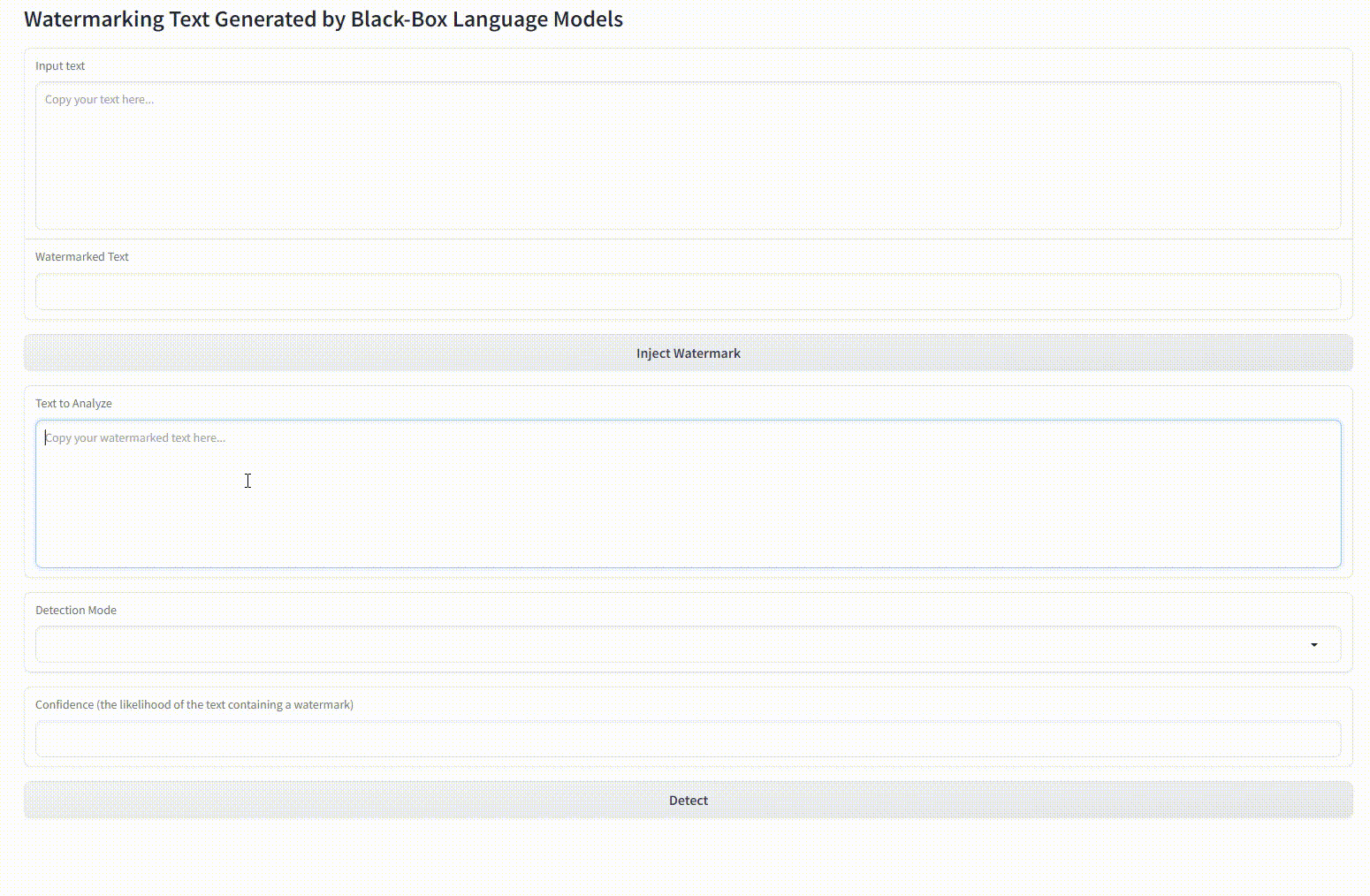Watermarking Text Generated by Black-Box Language Models
LLMs now exhibit human-like skills in various fields, leading to worries about misuse. Thus, detecting generated text is crucial. However, passive detection methods are stuck in domain specificity and limited adversarial robustness. To achieve reliable detection, a watermark-based method was proposed for white-box LLMs, allowing them to embed watermarks during text generation. The method involves randomly dividing the model vocabulary to obtain a special list and adjusting the probability distribution to promote the selection of words in the list. A detection algorithm aware of the list can identify the watermarked text. However, this method is not applicable in many real-world scenarios where only black-box language models are available. For instance, third-parties that develop API-based vertical applications cannot watermark text themselves because API providers only supply generated text and withhold probability distributions to shield their commercial interests. To allow third-parties to autonomously inject watermarks into generated text, we develop a watermarking framework for black-box language model usage scenarios. Specifically, we first define a binary encoding function to compute a random binary encoding corresponding to a word. The encodings computed for non-watermarked text conform to a Bernoulli distribution, wherein the probability of a word representing bit-1 being approximately 0.5. To inject a watermark, we alter the distribution by selectively replacing words representing bit-0 with context-based synonyms that represent bit-1. A statistical test is then used to identify the watermark. Experiments demonstrate the effectiveness of our method on both Chinese and English datasets. Furthermore, results under re-translation, polishing, word deletion, and synonym substitution attacks reveal that it is arduous to remove the watermark without compromising the original semantics.
PDF Abstract



